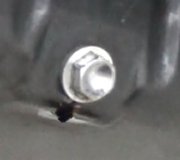Wednesday, March 4th, 2015 AT 4:16 PM
My 1999 Deville finally died and I sold it for next to nothing and I'm looking for a car. I'm 6 ft 5 and 450 lbs and all I can fit in is an older caddy deville. I found a trade in 2002 Deville at a honda dealerership and it has 92,000 miles and is in great condition. I had a mechanic look at it today ( I really don't know him well because I'm new in the area but he was willing) and the only major problem he found was in his words "in the near future it's gonna need valve cover gaskets. Not right away but soon". Obviously he told me to offer way less and use this as the excuse. I don't know much if anything about cars but I remember hearing somewhere that replacing valve cover gaskets is a big job and difficult to do correctly. Should I stay away from this vehicle because of this? Otherwise the car looks and rides just great. Plus I'm disabled on SS Disability and am living on a tight budget. Thanks for your opinion!


